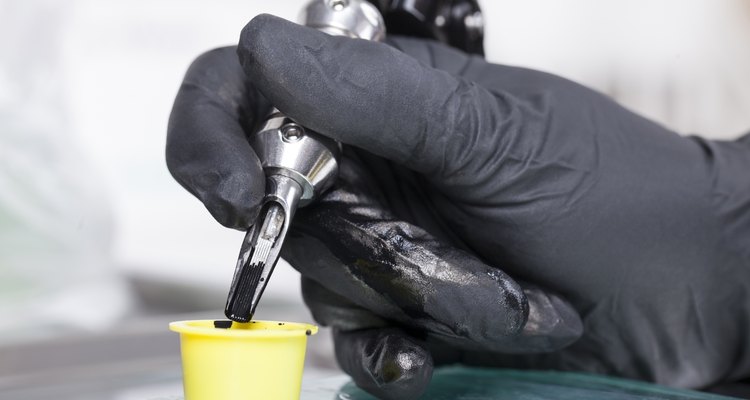
Dirk Ott/iStock/Getty Images
Professional tattoo artists use the brand Tincture of Green Soap before, during and after a tattoo procedure. A medical level soap, green soap is not available in stores, only from medical and tattoo supply companies. It is called "green soap" by tattoo artists, who place the soap into a spray bottle and dilute the soap with water prior to a tattoo procedure. The spray bottle allows the tattoo artist to apply the solution to several tattoo clients' skin without ever touching a client's skin, to keep the procedure sanitary.
Green Soap for Sanitizing
Tincture of green soap sanitizes the skin of a tattoo client before the artist begins the tattoo. The tattoo artist wipes the client's skin with a disposable paper towel after spraying green soap onto the skin, while wearing a fresh pair of latex or nitrile gloves. The green soap moistens the client's skin while sanitizing the area to prepare the skin for hair removal. While the green soap is on the client's skin, the tattoo artist shaves the body part to prevent ingrown hairs from the needle entering the skin and for ease of stencil transfer.
Applying the Tattoo
After shaving the skin in the area designated for the tattoo, the tattoo artist will wipe your skin again with a paper towel and green soap to remove any loose hair. The tattoo artist sprays your skin again to moisten the clean, shaven skin. You will be asked to stand still while the tattoo artist applies the stencil for your tattoo. A tattoo stencil is an outline of your tattoo design on transfer paper, which your tattoo artist uses as reference while performing your tattoo. The tattoo artist will peel the stencil paper off after a minute or two and will ask you to look at the stencil and approve the position of the design. If the design is improperly placed or needs to be removed for a last minute design change, the tattoo artist will spray the purple stencil with green soap and wipe with a paper towel to remove the stencil.
When Ink Meets Skin
Because the green soap is made free of dyes and with low alcohol content, the green soap also serves as a wiping agent during a tattoo procedure. During your tattoo procedure, the tattoo artist will wipe excess ink off the tattoo while performing the outline and shading. Removing excess ink allows the tattoo artist to preview the next line in the design and to examine the previous lines or shading in case additional ink is necessary. The constant wiping of the ink from your skin could cause irritation to your skin with products that have a high alcohol content or strong fragrances or dyes.
Cleaning Up Afterward
The tattoo artist will wipe blood and remaining excess ink off your skin at the end of your tattoo. Before placing a bandage on your tattoo, the tattoo artist not only uses the green soap to clean blood and ink off your tattoo, but to also ensure your newly tattooed skin is sanitized underneath the bandage. Most tattoo artists recommend leaving the bandage on for several hours after the tattoo is finished. The tattoo artist washes the skin with green soap to ensure the cleanliness of your new tattoo until you remove the bandage and wash your skin.
A Few Cautions
Green soap should never get into a tattoo client's eyes or other mucous membranes. Transmission of diseases such as hepatitis C is possible if a tattoo artist cross contaminates the spray bottle containing the green soap. To prevent contamination, the tip of the spray bottle should never come into contact with a client's skin. Tubes from the tattoo machine are not sterile, only sanitary, after being sprayed and cleaned by Tincture of Green Soap. Tincture of Green Soap should never be used in place of an ultrasonic and autoclave to clean tattoo tubes.
Related Articles

How a Tattoo Stencil Is Made

How to Use Tattoo Stencil Paper
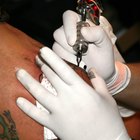
How to Clean Tattoos With Rubbing ...

Alternatives to Green Soap

How to Get Rid of Green Stuff on Glasses

The Best Skin Tag Removal Products

How to Get Rid of Sunless Tanning ...

How to Remove Running Sutures

How to Remove a Labret Piercing

How to Remove an Eyebrow Tattoo
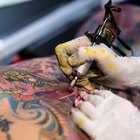
Tattoos and Tattooing
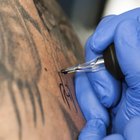
How to Care for an India Ink Tattoo

How to Clean the Green Discoloring on ...
Is it Safe to Get Tattoos While ...

How to Take Care of a Colored Tattoo ...
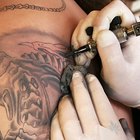
Permanent Tattoo Stencil Transfer Tips

Phisoderm Ingredients

The Best Way to Remove Hair Dye
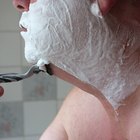
Shaving Soap Recipe With No Lye

Green Tea Remedy for Blackheads
Writer Bio
Maude Coffey retired after 10 years working as a professional body modification artist in the tattoo industry. She is certified in principles of infection control and blood-borne pathogens. Coffey received additional training and classes, such as anatomy, jewelry standards and aftercare, from the Association of Professional Piercers. Coffey aims to educate about safe tattooing and piercing practices while writing for various websites.
Photo Credits
Dirk Ott/iStock/Getty Images